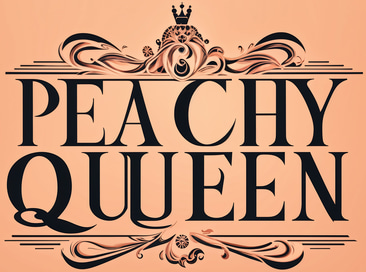"Poppies Will Put Them to Sleep": The Symbolism of the Poppy Field
6/18/20244 min read


Historical and Cultural Context of the Poppy
The poppy flower carries a rich tapestry of historical and cultural significance, deeply rooted in ancient traditions and modern commemorations. In ancient Greek mythology, the poppy was intimately linked to Hypnos, the god of sleep, and Thanatos, the god of death. These mythological connections stem from the flower's natural properties, as it was believed to induce sleep and provide a peaceful passage into the afterlife. The Greeks often depicted Hypnos with poppies in his hands or around his head, symbolizing his dominion over sleep and dreams.
Fast forward to the early 20th century, the poppy was immortalized as a symbol of remembrance during and after World War I. The stark imagery of poppy fields in the poem In Flanders Fields by Lieutenant Colonel John McCrae encapsulated the collective mourning and respect for soldiers who perished in the war. The poem's vivid depiction of poppies growing among the graves of fallen soldiers resonated globally, leading to the adoption of the poppy as a symbol of remembrance and peace. Each year, the poppy is worn in many countries on Remembrance Day to honor those who have sacrificed their lives in military service.
Beyond its mythological and commemorative roles, the poppy has been valued in traditional medicine for its opiate properties. The opium poppy, in particular, has been used for centuries to produce substances like morphine and codeine, which are effective in inducing sleep and relieving pain. These medicinal uses highlight the dual nature of the poppy as both a healer and a harbinger of sleep, reinforcing its complex symbolism.
Overall, the poppy flower embodies a profound duality, serving as a bridge between life and death, sleep and wakefulness, memory and forgetting. Its enduring presence in mythology, commemoration, and medicine underscores its multifaceted importance and its deep resonance across different cultures and epochs.
The Poppy Field in Literature and Film
The poppy field holds a significant place in literature and film, often symbolizing a state of unawareness or escapism. One of the most iconic representations of this motif is found in L. Frank Baum's novel, 'The Wizard of Oz,' and its subsequent film adaptation. In the story, Dorothy and her companions encounter a vast poppy field that induces an enchanted slumber, halting their progress toward the Emerald City. This scene serves as a transitional moment between the fantastical elements of Oz and the imminent reality of their quest, testing the characters' resolve and determination.
The use of the poppy field in 'The Wizard of Oz' is particularly poignant as it embodies both the allure and danger of succumbing to a state of unconsciousness. Dorothy's journey through the field mirrors the broader human experience of facing obstacles that challenge one's perseverance. The poppies symbolize a seductive escape from reality, a theme that resonates with readers and viewers as they witness the characters' struggle to overcome lethargy and continue their pursuit of their goals.
Beyond Baum's work, poppies have appeared in various other literary and cinematic contexts. In John McCrae's famous war poem, 'In Flanders Fields,' the poppy becomes a symbol of remembrance and the sacrifice of soldiers during World War I. The crimson flowers growing amidst the graves evoke a sense of both beauty and solemnity, contrasting the vividness of life with the stillness of death.
In Victorian literature, poppies often appear in descriptions of opium dens, serving as a metaphor for the escapism and altered states induced by the drug. Writers like Charles Dickens and Thomas De Quincey depicted these dens as places where individuals sought refuge from the harsh realities of life, only to find themselves ensnared in a different form of oblivion. The poppy, in this context, underscores the dual nature of sleep—both a temporary reprieve and a potential trap.
Through these diverse examples, it becomes evident that the poppy field consistently functions as a powerful literary and cinematic device. It symbolizes the delicate balance between awareness and unawareness, reality and fantasy, challenging characters and audiences alike to navigate the thin line between escape and perseverance.
The Psychological and Symbolic Interpretations
The poppy field in 'The Wizard of Oz' serves as a potent psychological and symbolic element within the narrative. As the characters traverse this field, they encounter a powerful metaphor for the allure of escapism. The vibrant and seemingly tranquil poppies represent an enticing yet deceptive sense of security. This setting subtly warns against the dangers of succumbing to illusions or distractions that can lead one astray from their true path and goals.
One of the most compelling aspects of the poppy field is the sleep it induces. This enforced slumber can be interpreted as a metaphor for the unconscious mind, where latent fears and desires reside. The characters' struggle to remain awake amidst the poppies symbolizes the universal human challenge of confronting and overcoming one's inner turmoil. It underscores the necessity of facing inner fears and desires rather than allowing them to remain hidden and unaddressed.
Moreover, the poppy field functions as a narrative device that highlights the importance of perseverance. As Dorothy and her companions battle the effects of the poppies' soporific influence, their journey illustrates the power of determination and the critical role of friendship and teamwork. The characters' mutual support enables them to overcome the field's obstacles, thereby reinforcing the narrative's broader themes of unity and collective strength.
These psychological and symbolic layers add depth to the story, enhancing the audience's understanding of the characters' trials. The poppy field is not merely a physical challenge but a representation of the internal struggles that everyone must face. Its inclusion in 'The Wizard of Oz' enriches the narrative, providing a multifaceted exploration of the human experience and the enduring power of resilience and camaraderie.
